Does it make a difference?
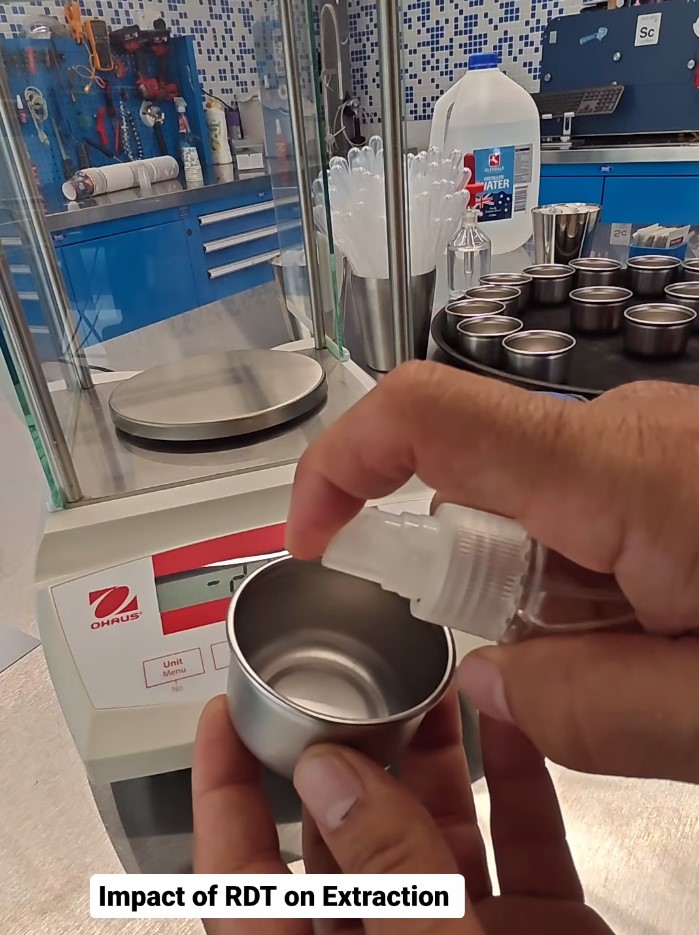
By Jeremy & Joe
Download a PDF of this write-up here
Download the data for this study here
Goal: Assess the impact of RDT on espresso extraction
Background: For years in coffee forums on the internet, the “Ross Droplet Technique” (RDT) has been discussed as a way to reduce static electricity in coffee grounds, improving overall station cleanliness. Harper Méndez and colleagues (2023) provided an excellent scientific examination of this technique, demonstrating that exogenously applied moisture controls electrostatic charging of the coffee particles. This study is a wonderful scientific effort where disciplines from seemingly disparate fields of study combine their methodologies and tools to tackle an issue. We applaud the academic rigor applied by the research team to delve into the potential mechanisms involved in reducing static in ground coffee.
Our goal here is to present data from a well-controlled, focused experiment that provides some evidence as to the impact of RDT on espresso extraction in a construct with high external validity (i.e., a typical coffee preparation by a barista).
Methods:
Conditions in the experiment:
- [PreGrind Spritz] Pre-spritzing coffee (whole beans) before grinding
Rationale: This is the RDT condition, with the goal of assessing the impact of RDT on espresso extraction (quantified as total dissolved solids measured via a coffee-correlated refractometer).
- [PostGrind Spritz] Post-spritzing coffee (ground in portafilter basket) after grinding
Rationale: This condition is meant to assess a potential change in extraction due to the early introduction of water into the coffee grounds before being inserted into the espresso machine for extraction. The hypothesis here is that if RDT significantly impacted espresso extraction, it may be because the early introduction of water initiated or enhanced extraction. The amount of contact time between coffee grounds wetting was matched to that of the RDT condition. Automated needle distribution was applied to all conditions to ensure consistent and thorough incorporation of water throughout the puck.
- [Baseline] Baseline condition with no spritz (but all else the same with respect to timing from grinding to extraction and puck preparation).
Ten shots per condition were collected using a randomized order. Ground coffee in the portafilter basket for all conditions was distributed using an automated needle distributor and tamped using an automated tamp device to ensure consistency. Time between grinding and insertion into the grouphead was constant for all conditions. Time between water contacting coffee (whole bean in PreGrind and ground coffee in PostGrind) was consistent between relevant conditions. No weight adjustments to the coffee dose were made, as the water averaged a weight increase of 0.061g for both the Pre- and PostGrind conditions and PreGrind on average added 0.01g of extra coffee into the portafilter basket compared to the PostGrind and Baseline conditions. All coffee used was single origin from the same batch of roasting.
No significant differences were observed for the Socratic Coffee experiment in dose mass or final beverage mass (Figure 1).
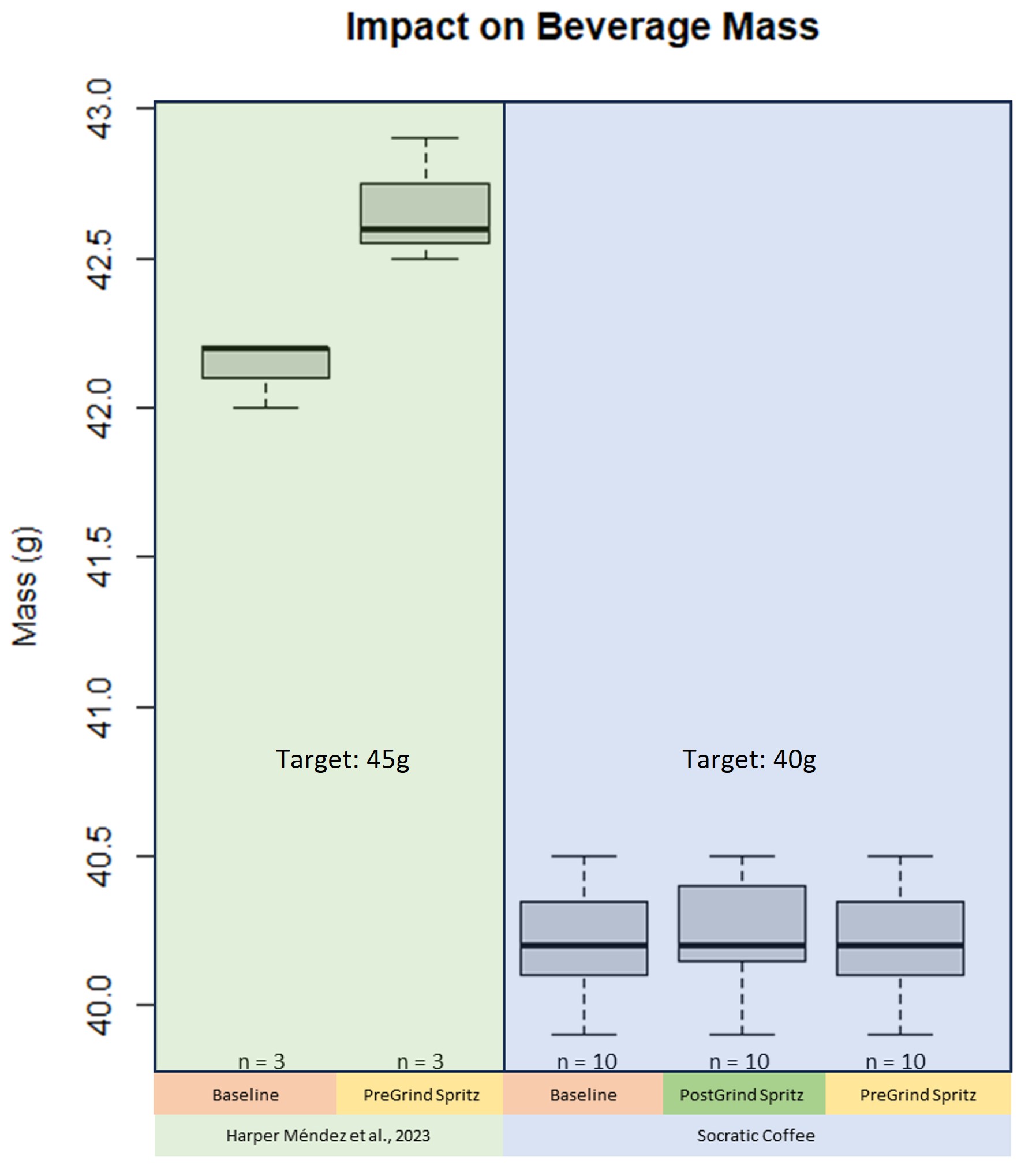
Figure 1. Final Beverage Mass for Shots. No significant differences observed between conditions in the Socratic Coffee experiment. Potential difference in beverage mass between conditions for Harper Méndez et al. (2023) was not tested due to insufficient samples (n=3 per condition).
Results: A stepwise, three-predictor generalized linear model was performed using Total Dissolved Solids (TDS) as the dependent variable and Beverage Mass, Shot Time, and Condition as predictor variables. No significant (p < 0.05) differences were observed (see Figure 2). Shot time between conditions was observed to have a “marginally significant” (p=0.0523) effect (see Figure 3), with PreGrind coffee leading to slightly longer extractions (average increase of 1.9s). PreGrind spritzing coffee also created the greatest variability in shot time (standard deviation of 2.35s).
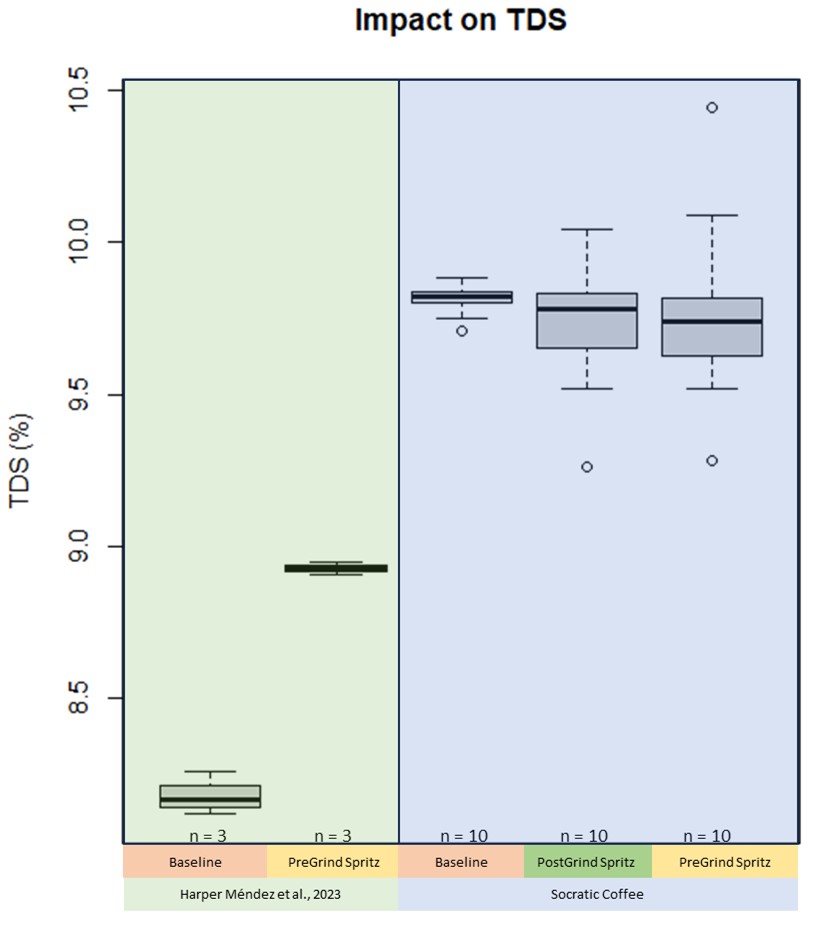
Figure 2. Impact of RDT on Extraction. No significant differences observed in the Socratic Coffee experiment.
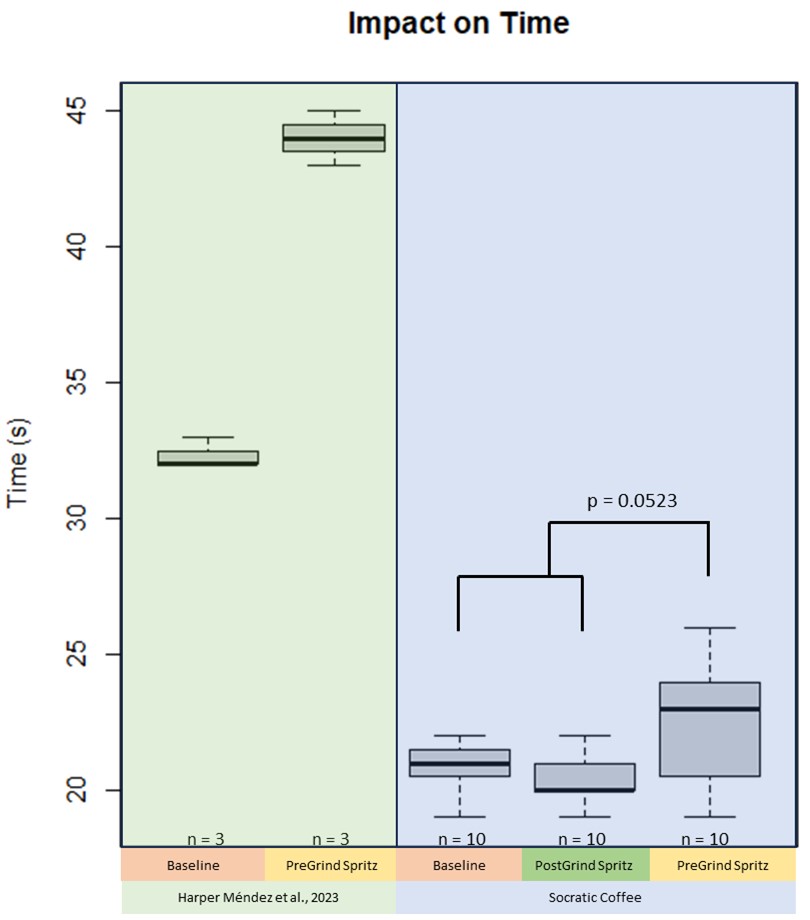
Figure 3. Impact of RDT on Shot Time. No significant differences observed in the Socratic Coffee experiment.
Conclusions: Our experiment demonstrated no significant effects of spritzing water on coffee for espresso extraction. Our espresso shot metrics and equipment differed from those in Harper Méndez et al. (2023), making a direct comparison difficult. Our observed TDS readings were higher overall, our final beverage mass across all conditions more consistent, and our shot times shorter. Further, we did not see the drastic change in shot time between PreGrind Spritz and Baseline. We discuss some key differences in our experiment below.
Does spritzing your coffee pre-grinding reduce static and mess? Yes. Does it improve extraction? 🤷… at least not in this experiment. The increased variability seen in the RDT condition, while not statistically significant in this experiment, may hint at a change in particle distribution of the ground coffee relative to the Baseline and PostGrind Spritz conditions.
Discussion:
While we did not see a significant impact on extraction with RDT (or post-grind spritzing), it is worth discussing our results in light of potentially discrepant results from those observed in Harper Méndez et al. (2023). And, further, we want to acknowledge that RDT impact on extraction is only a small portion of their much larger paper—one of many experiments they report on. However, we consider the impact of RDT on extraction to be an important topic to tackle because while the paper focused mainly on static charge during grinding, a small portion assessed impact of RDT on extraction and extrapolated those data to potentially improved subjective experience (i.e., taste). As many readers likely saw in the popular press write-ups of this paper, it was this aspect—enhanced taste—that was the main focus of those articles. A rigorous assessment of RDT on 1) improving overall extraction and 2) enhancing subjective flavor of the espresso was simply not carried out by Harper Méndez et al. (2023). Nor does the previously published reference (Cameral et al., 2020) in the paper include any scientifically rigorous assessment of extraction differences on subjective experience. While the latter aim is extremely challenging to carry out in a scientifically convincing and statistically meaningful way, the former is solely objective and straightforward. Our results suggest, within the parameters of our testing, that RDT may decrease shot consistency and has no impact on extraction. Below we discuss key differences between our experiment and the one described by Harper Méndez and colleagues:
| Socratic Coffee | Harper Méndez et al. (2023) |
| Grinder: EK43 with SSP Burrs | Grinder: EK43 with Stock Burrs |
| Espresso Machine: La Marzocco Linea KB90 ABR | Espresso Machine: Victoria Arduino Black Eagle |
| Distributor: Bookoo Lab | Distributor: ? |
| Tamper: Cinoart PTB MY @ 15kg pressure | Tamper: PUQpress Q1 @ 196 N pressure (20kg) |
| Basket: VST (20g) | Basket: ? |
| Puck Screen: None | Puck Screen: normcore 58.5 mm |
| Refractometer: VST | Refractometer: ? |
Methodology Differences
| Socratic Coffee | Harper Méndez et al. (2023) |
| Target Dose: 20g | Target Dose: 18g |
| Target Final Beverage Mass: 40g | Target Final Beverage Mass: 45g |
| Shot Parameters: 94C water, 8bar pressure, no preinfusion | Shot Parameters: 94C water, 7bar pressure, 2s preinfusion |
| Number of Samples Per Condition: 10 | Number of Samples Per Condition: 3 |
| Randomization in Order: Yes | Randomization in Order: No |
| Amount of Water Applied: 0.061g | Amount of Water Applied: ? |
| Water Chemistry: Remineralized custom blend | Water Chemistry: ? |
Why is randomization important? Equipment may heat up during the course of an experiment or testing environment factors may change, creating potentially confounding, uncontrolled variables (such as increasing grind distribution variability for every subsequent shot). Randomization allows potential variability to spread across the various conditions of the experiment, disrupting potential order effects and allowing it to become “noise” as we seek the “signal” (i.e., the impact of our intended independent variable).
Additionally, while there can be many factors to consider when determining an appropriate sample size, many disciplines of science use 10 observations per condition as a minimum, particularly those coming from an empirical experimentalist perspective where there are simply too many variables to control. To deal with this “noise”, increased samples are needed to find potential systematic changes in the measured variables due to intended experimental manipulations. Attempting to draw significant differences from sample sizes smaller than 10 per condition is unusual. If we assume the effect of RDT reported by Harper Méndez and colleagues is not spurious (i.e., not a Type I error) and attempt to calculate an effect size from the data, a basic sample size calculation would require a minimum of 13 samples per condition, significantly more than reported.
Another way to assess the impact of RDT is to examine the extraction yield for each shot of espresso. This is simply an efficiency measure—how efficiently mass moved from the dose into the final beverage:

The numerator of this equation gives us the mass that was dissolved and transferred into the final beverage. Dividing by the starting mass of the dose gives us the efficiency.
| Socratic Coffee | Harper Méndez et al. (2023) | ||||
| Baseline | PreGrind Spritz (RDT) | PostGrind Spritz | Baseline | RDT | |
| Extraction Yield (%) | 19.7 | 19.6 | 19.6 | 19.1 | 21.2 |
| Standard Deviation | 0.03 | 0.17 | 0.13 | 0.19 | 0.05 |
It is worth noting that Harper Méndez and colleagues present data suggesting a potentially noticeable increase in brew efficiency with RDT (as we describe previously, analyses regarding statistical significance are not appropriate given their small data set). Our data does not show that effect on espresso with RDT. As described above, this may be due to differences in methodology. However, what is clear is that RDT does not always increase extraction and there remains a lack of compelling evidence that it improves taste.
Papers referenced:
Harper Méndez et al. (2023): https://doi.org/10.1016/j.matt.2023.11.005
Cameron et al. (2020): https://doi.org/10.1016/j.matt.2019.12.019
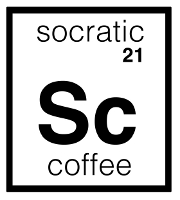
Leave a Reply